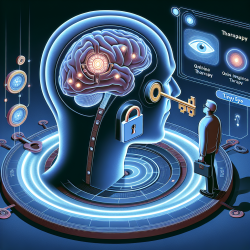Understanding the Role of the Dentate Nucleus in ALS
Amyotrophic lateral sclerosis (ALS) is a progressive neurodegenerative disease that primarily affects motor neurons. Recent research, as detailed in the study "Involvement of the dentate nucleus in the pathophysiology of amyotrophic lateral sclerosis: A multi-center and multi-modal neuroimaging study," has shed light on the potential role of the dentate nucleus (DN) in ALS. This study utilizes advanced neuroimaging techniques to explore the structural and functional connectivity of the DN, providing insights that could be transformative for practitioners in speech-language pathology and other therapeutic disciplines.
Key Findings from the Study
- The study involved 127 participants, including 71 ALS patients, using resting-state functional MRI (rs-fMRI) and diffusion tensor imaging (DTI).
- Findings indicated altered functional connectivity between the DN and several brain regions, including motor and extra-motor areas.
- Significant correlations were found between DN connectivity and clinical measures such as the ALS Functional Rating Scale-Revised (ALSFRS-R).
- Despite functional changes, no significant volumetric changes in the DN were observed.
Implications for Practitioners
For speech-language pathologists and therapists, these findings highlight the importance of considering both motor and cognitive aspects of ALS. The DN's involvement in both motor and cognitive functions suggests that therapeutic interventions could benefit from a more integrated approach that addresses both domains.
Data-Driven Therapy Approaches
By understanding the specific brain regions affected in ALS, practitioners can tailor their therapeutic approaches to target these areas more effectively. For instance, incorporating cognitive exercises alongside traditional speech therapy could help in maintaining or even improving communication abilities in ALS patients.
Encouraging Further Research
The study opens up numerous avenues for further research. Practitioners are encouraged to explore how these findings can be integrated into clinical practice, potentially leading to improved patient outcomes. Additionally, further research could investigate how these neuroimaging findings correlate with therapeutic interventions over time.
Conclusion
The involvement of the DN in ALS pathophysiology underscores the complexity of the disease and the need for comprehensive therapeutic strategies. As online therapy providers like TinyEYE continue to innovate, integrating findings from such cutting-edge research could enhance the efficacy of therapy programs offered to schools and other institutions.
To read the original research paper, please follow this link: Involvement of the dentate nucleus in the pathophysiology of amyotrophic lateral sclerosis: A multi-center and multi-modal neuroimaging study.










